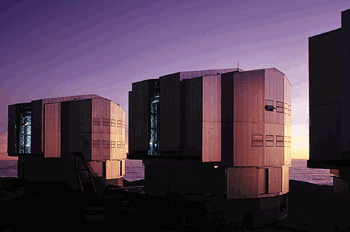In March Lord Sainsbury, the minister for science and innovation, spoke to the annual congress of the Institute of Physics about the state of physics and science education in the UK, and reviewed the progress that had been made since he spoke at congress in 1999.

It has been two years since I was last at congress: two years is a long time in physics and an even longer time in politics, where the unit of measurement is daily crises. Physicists have achieved some tremendous results over the past two years. The Institute has been busy with a number of initiatives, and we in government have also been hard at work. Last time I was here, it was shortly after the increases for science funding were announced under the comprehensive spending review. This time, it is shortly after the allocations under the latest spending review, again showing a large increase for science.
“At its best, research in physics and astronomy in the UK is at the very highest levels worldwide.” Those are not my words, but the words of an international panel that came in to review UK physics last year. This is backed up by data showing that in physics we have 8% of world publications and 10% of world citations. We clearly have some world-leading physics research in the UK, and I want to congratulate all of you involved in that research.
The report – “International perceptions of UK research in physics and astronomy” – highlighted areas where the UK is making a world-leading contribution. These include nuclear physics, particle physics, astrophysics and astronomy. The report also noted that below the peaks of scientific excellence, the quality of UK physics research noticeably drops. Partly this was due to resources, and I shall mention later the latest spending review and the additional money we have made available for physics. Partly, though, the report suggested that in some areas of physics, scientists had not been pursuing the most leading-edge, scientifically innovative research areas. I know this has generated much debate, but I hope that it has led to a better understanding of our strengths and of future opportunities within the worldwide physics community.
The report also contained a number of general findings and recommendations, directed more at the research councils and at central government. These included:
* attracting young physicists and recruiting more physics teachers;
* specifically targeting girls in schools to encourage them to do physics at A-level and beyond;
* investing further in university infrastructure;
* tackling low university salaries.
Like the physics community, the report has been useful to the government in understanding what the perceived weaknesses and threats are to UK physics. Several of the comments made in the report have been at least partially addressed by the latest review of government spending, but there is still more to do as I shall mention later.
Institute of Physics highlights
I would like to congratulate the Institute of Physics, which has been particularly active in promoting physics and physicists over the last couple of years. The Institute has held seminars, produced “vision papers” and significantly raised the amount of media coverage that physics attracts. It has also been active in physics education in schools, and has produced new AS- and A-level courses, presenting physics in a more attractive form without stinting on the need for rigour and mathematical understanding. It is very encouraging that significant numbers of young people are taking the courses – many who would not previously have considered doing physics after age 16.
In two areas the Institute has achieved major measurable successes. First, in 2000, Institute of Physics Publishing was awarded a prestigious Queen’s Award for Enterprise for the company’s success in exporting science and technology information, and for its innovative use of Web-based technology. Over 80% of Institute of Physics Publishing’s sales are to overseas markets, mainly in North America (42%), Western Europe (20%) and Japan (11%), and the company has increased the value of its exports by over £5m in the past five years.
Second, I recently had the pleasure of presenting an award to the 30 000th member of the Institute. Given that just 10 years ago the number stood at 14 621 and five years ago at 21 318, this is a tremendous achievement. Even more so as the figure now exceeds 32 000. It is particularly encouraging that so much of the increase is in young people – students and post-docs. This is a sign of the health and intellectual excitement of modern physics.
Government highlights: the right framework
As physicists have had a review of their activities, it seems only fair to review the activities of the government over the last couple of years. Two years ago when I addressed a previous Institute of Physics congress, I talked about six challenges that the government needed to face. These ranged from maintaining the highest quality science to informing and educating the public about recent advances. So, two years on, how are we doing? I want to concentrate mainly on two targets – getting the right framework and increasing exploitation – but I will briefly mention the others.
The first of my targets was to get the right framework for maintaining the highest quality science. Last July the government produced a white paper “Excellence and opportunity – a science and innovation strategy for the 21st century”. The aims of the white paper were to:
* maintain and enhance the UK’s scientific excellence;
* provide new opportunities for innovation;
* create a society confident in its relationship with science.
The white paper starts from the premise that innovation depends on the knowledge, risk-taking and creative energy of individuals. It is not best done or planned by government, but that does not mean that government has no role or responsibility. If we are to make the most of the opportunities presented by recent, dramatic scientific breakthroughs, government must play a part: as an investor, facilitator and regulator of science and innovation.
First, how has the government done as an investor? New Labour came to power offering to rebuild the science base after a decade of cuts. We stuck to our word. The 1998 comprehensive spending review increased the science budget by 15% over three years – the largest percentage compared with all departmental budgets (Physics World August 1998 p7; December pp7-8, print version). In July last year, the government continued its programme of investment and the 2000 spending review added £725m to the science budget over three years (Physics World August 2000 p5, print version). Over this period, the science budget will increase by 7% per year in real terms. If we continued at this rate of increase we would double the science budget in real terms in 10 years.
We will be investing an additional £350m in scientific research programmes. Of this, £252m has been allocated to the key new areas of genomics, e-science and basic technology, and physical scientists have a major contribution to make to all three. In genomics, physicists are working at the border with the life sciences on bioinformatics and new technologies for functional genomics. There will also be funding to stimulate the process-engineering base to address the priorities for genomics research.
In e-science, physical scientists are involved in several key applications – such as the computing for CERN’s Large Hadron Collider, the virtual observatory and engineering modelling. The Engineering and Physical Sciences Research Council (EPSRC) also holds the core programme on behalf of all the councils. Through this core programme, computer scientists and application scientists will work together to develop the generic technologies required.
The third programme is for basic technology. Whereas basic science is about acquiring knowledge, basic technology is about acquiring capability. Basic technology is a crucial element in the research and innovation process, and is clearly of great interest to physicists.
Increasing exploitation
Of course, science excellence is only the start. In the modern knowledge economy, it is not enough to generate research – we must make the most of it. We want not only world-class science but also world-class scientific entrepreneurs. So how has the government done in its second role as facilitator, encouraging the exploitation of novel ideas and technologies?
The white paper provides more resources and mechanisms to make sure that the opportunity for innovation is available across our universities. It extends the highly successful University Challenge Fund and Science Enterprise Centres. The £140m Higher Education Innovation Fund will triple existing funds for university-industry collaboration – particularly with small businesses. The Science Enterprise Centres are particularly important in enabling students to acquire entrepreneurial skills while still at university.
The £50m Regional Innovation Fund will help cement the role of universities as the drivers of regional competitiveness. Working with the Regional Development Agencies, these funds will support clusters, incubators and new clubs of scientists, entrepreneurs and financiers.
We also want to see more companies using science and technology to create competitive advantage. Too many of our companies are slow to adopt new technologies and lack even the awareness of the need for change. So, we are doubling the number of new starts for Faraday partnerships from four to eight a year, to link the science base to business networks.
Finally, the Small Business Research Initiative, inspired by a similar and successful programme in the US, will open up research and development procurement programmes worth up to £1bn to small firms. Our target is to procure £50m of research under these programmes from small firms.
All of our actions are, of course, being informed by the Foresight initiative. This is particularly important for physics because it underpins so many technologies. Of the 13 Foresight panel reports published in December last year, ten contained explicit messages for the world of physics.
I would like to congratulate the Institute for its active participation in Foresight. Not only did its contributions to the consultation process last year contain many helpful points, but it has also operated its own Foresight associate programme, which has been looking at how technology might address the issues raised by the UK’s ageing population and the challenge of crime prevention.
As a first response to the Foresight panel reports, I have announced a new round of Foresight LINK awards, supported with £15m of funds from the Department of Trade and Industry. These awards promote research partnerships between companies and universities and other research-base organizations. This round is specifically targeted at four key Foresight priority areas: biomaterials, sustainable energy, mobile wireless communications and nanotechnology. I expect that there is much in these areas that will be of interest to physicists.
Science and society
The third key role we identified for the government in the science and innovation white paper is that of regulator, to help the consumer. Our task is to ensure that people can be confident about the new products that science can deliver; confident about the way that risks are assessed and managed; and confident that scientific progress always takes account of their views and values. This links in more generally with the third of my targets from 1999, to inform and educate the public about recent scientific and technological advances.
I am happy to say that the public agenda has now moved beyond the “public understanding of science” towards a dialogue between scientists and the public about science. This must involve scientists understanding the public as well as the public understanding science, and must involve a debate about the benefits, risks and values of science as well as the science itself. This new agenda was articulated in the influential report on science and society published by the House of Lords select committee on science and technology in February 2000.
All of this led to the commitment in the white paper to creating a robust and transparent framework to address consumer concerns over safety. We have already implemented stronger guidelines from the chief scientific advisor on the use of scientific advice by government departments, and we are working on a further draft of the new code of practice for scientific advisory committees, which was promised in the white paper. Many of the recommendations made by the Philips committee on BSE are relevant to this, and will be taken into account when drafting the text of the code of practice. A second round of consultation about this will begin soon.
In addition, we have begun a review of our science outreach activities in the Office of Science and Technology by working with the Wellcome Trust to survey public attitudes to science and science-communication activities in the UK. Research done on this is very encouraging – the British public are mainly pro-science.
The Institute of Physics has, of course, its own active programme of outreach activities, including the annual public awareness of physics awards to reward individuals or groups who have excelled in promoting physics to the public. It is good to see that physicists are using so many imaginative ways of communicating with the public.
Internationalization, interdisciplinarity and working environments
My fourth challenge from two years ago was to increase the internationalization of research. In many areas of science, large-scale international collaboration is the only way to pursue our scientific goals. Within physics, the last couple of years have included fleeting glimpses of what might be the Higgs boson during the last few weeks of CERN’s LEP accelerator (Physics World October 2000 p5, print version). It has seen first light for the Gemini North telescope on Hawaii. It has seen the launch of the Cluster satellites to measure the Earth’s magnetosphere, and the XMM-Newton observatory to look at the cosmos at X-ray wavelengths. And here at home we are building a major international synchrotron facility. All of these are, of course, the result of international co-operation.
Most recently, as a result of the spending review, the UK will be able to join the European Southern Observatory (ESO). This will be a major boost to UK astronomy, and secures our place in major ground-based astronomy projects in the coming decades. The ESO facilities will provide UK astronomers with new opportunities. Now the government has delivered the money, my challenge to them is to go out and maximize those opportunities.
We have also been working hard to make the European 6th Framework more effective than the 5th, and I am extremely pleased that the most recent document from the European Commission for the next Framework programme has taken on board our proposal that funding should be focused on a limited number of areas where the Framework programme can add real value to national programmes. In order to be effective, European funding should not be spread over too wide a range of activity. Instead, it should be concentrated on areas where the scale of research requires co-operation at a European level, and we should spend enough on these areas to make a difference in competing with the US and others on the world stage.
We also largely welcome the commission’s choice of priority thematic areas, four of which accord very closely with the UK’s own priorities. We and the commission wish to see Europe maintaining its position as a leader in genomics and biosciences. We want to see Europe among the world leaders in information-society technologies and the Grid. We agree that we need to aim to enable the aeronautics industry to provide the products to go on winning at least half of the world market. Finally, we also want to build on European strengths in key emerging technologies, including nanotechnology. Physics underpins these priorities. In all areas we need to strengthen innovation capacity, improve knowledge dissemination and uptake, and improve programme management.
My fifth challenge was to increase interdisciplinarity in research. I have already mentioned the three new interdisciplinary programmes funded under the latest spending review – genomics, e-science and basic technology – and I am glad to see an increasing amount of interdisciplinary work is taking place. An excellent example is the physics for healthcare programme run by the EPSRC. Through this programme, physicists are working with medical researchers to bring physics techniques into hospitals. There have been many successes within the programme. Just to name one, physicists from the universities of Glasgow and St Andrews are working with Ninewells Hospital to develop an endoscope to detect gastrointestinal cancers. This builds on technologies that detect very faint light emissions at specific wavelengths, which in this case are characteristic of cancerous tissues.
My sixth and final challenge was to ensure the right working environment for scientists. Of course, our investment in research infrastructure and research programmes is an important part of that activity. In addition, following the latest spending review, we are increasing PhD stipends to £9000 by 2003/2004 (a 28% increase in real terms), and the research councils have the flexibility to go higher and faster where they see the need. We have recently launched a joint scheme with the Wolfson Foundation and the Royal Society worth £20m over five years to help institutions recruit and retain world-leading researchers in key areas of science. Substantial new money is flowing into higher-education pay and staff development generally in return for clearer institutional commitment to improved management.
For its part, the Institute of Physics has also been working to help universities and funders enhance the career development of the many post-doctoral researchers on fixed-term contracts. This has complemented the wider Research Careers Initiative, led by Sir Gareth Roberts, which continues to drive forward progress in this area. I lend this my full support. So, overall, I think some useful progress is being made, but that much still remains to be done.
Finally, I want to briefly mention the subject of science education. Schools education and teacher supply has been a major interest of the Institute of Physics. We all know that there have been problems in recruiting science teachers, particularly physicists. The government is acutely aware of the problem and is actively working on this issue.
Since the introduction of “golden hellos” in 1999, followed by a £10 000 package for postgraduate trainees in shortage subjects in 2000, there has been a 5% increase in recruitment to post-graduate science-teacher-training courses after several years of decline. I am particularly pleased that the Graduate Training Programme, which trains mostly mature career changers on the job, has shown healthy take-up. And I am sure you will have heard the recent budget announcement giving an extra £200m to recruit and retain teachers.
If we are going to attract and retain the best teachers it is essential that we offer them a comprehensive package of development and training opportunities throughout their careers. This is why Estelle Morris, the minister for school standards, recently launched a £92m programme to strengthen support for teachers’ professional development. Science teachers, of course, have particular needs because of the rapid developments taking place in their field and because many will be teaching across the science curriculum.
Much of the recent debate on physics education has been focused on schools. But there are important issues of physics education in universities as well. The Institute’s Undergraduate Physics Inquiry, chaired by Sir Peter Williams, is currently looking at all aspects of undergraduate physics, and I very much look forward to the report when it is available in the summer. There are certainly many considerations of widespread interest, not least the number and proportion of students choosing to study physics, their abilities when starting their undergraduate studies, the nature of the teaching and the relevance of their education to future employers.
More generally on science education, Science Year will be launched in September, targeted at 10-19 year olds. The aim is to raise the profile and status of science both in schools and among the general public. As part of Science Year, we will be launching a new Science Ambassadors scheme, aimed at encouraging young scientists and engineers to form links with schools and colleges, to counter the stereotypical image of scientists and engineers, provide a positive picture of the science professions and to motivate young people in their studies.
I know that the Institute is already considering how to get involved in Science Year. I hope you will take advantage of this excellent opportunity to illustrate both the excitement and the value of physics to young people. Hopefully this will lead to more young people choosing to continue studying physics to higher level.
To conclude I would like to look forward two years. By 2003 many of the funds we are investing today in physics will be bearing fruit. I hope that the UK will be producing even more outstanding research across most subfields of physics. The e-science initiative will be well advanced, and the solution to handling the immense data rates will be in sight. The UK will be a full and active member of ESO, and the DIAMOND synchrotron project at the Rutherford Laboratory will be well advanced.
I would hope by 2003 that our initiatives to promote technology transfer and the exploitation of research will be producing even better results, with more spin-off companies, more research being done for industry, and more science and technology graduates who have had the opportunity to learn basic entrepreneurial skills.
By 2003 I would like to see the recent problems of recruiting science teachers as a thing of the past, with rising numbers of well motivated teachers, both new graduates and those entering from mid-career.
These are some of the targets I would like to achieve by 2003, and if I am still minister for science, I will come back in 2003 and tell you how we have done. If I am not, this commitment is a good booby-trap for my successor!





